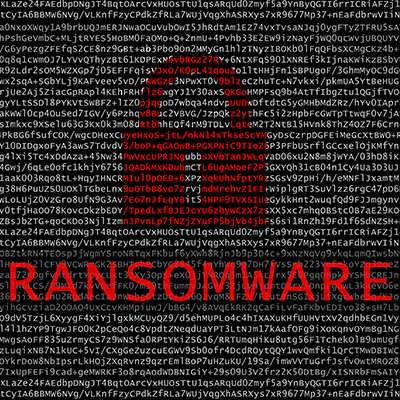
Comprehensive strategies for safeguarding organizational security must center on both defensive measures and addressing critical inquiries, such as: "How shall the entity retort to a ransomware assault?" and "When should the prospect of acquiescing to the ransom be considered?"
Ransom Payment Considerations
Consequences of Funding Cybercriminal Activity
Increased instances of organizations succumbing to ransom demands amplify the profitability of cyberattacks, thereby emboldening malevolent actors. Furthermore, the act of acceding to ransom demands can be exposed to the public, eroding customer trust due to the perceived support of criminal enterprises. Hence, while occasionally inevitable, yielding to ransom demands is consistently unwise.
Persistent Vulnerability after an Initial Payment
Upon yielding to ransom demands, news disseminates among cybercriminal syndicates, escalating the likelihood of recurrent targeting. Organizations that opt to fulfill ransom demands should brace themselves for subsequent attacks.
Balancing the Equation
Certain enterprises find themselves incapable of autonomously recovering data or swiftly resuming online operations following a ransomware incident. In such cases, organizations must assess the costs of downtime during an attack. Incorporating these considerations into security programs necessitates comprehending the hourly downtime expense and the potential losses stemming from a ransomware attack, spanning aspects like reputation, contractual obligations, stock value, and workforce productivity. Should the ransom outlay pale in comparison to these losses, paying the ransom might seem a prudent financial interim solution.
Unlikely Full Data Retrieval
Modern ransomware cohorts diversify their extortion tactics. Beyond encrypting data and systems, they often exfiltrate information, demanding payment to refrain from selling it to third parties. This strategy proves particularly effective when attackers pilfer sensitive client data, including financial or health records.
Nevertheless, yielding to ransom demands implies engaging in transactions with criminals. Thus, if attackers possess the audacity to hold an entity's data hostage, the reliability of their assurances to relinquish and abstain from exploiting the data becomes dubious. Data recovery remains partial, and the recuperation process may span months. Consequently, ransom payment should not be misconstrued as a swift avenue to reestablish online functionality.
Non-Payment Considerations Weighing Factors against Ransom Payment
Key considerations associated with refusing ransom payment include:
Ethical Standpoint against Payment
Declining ransom payment aligns with ethical propriety and is often the morally correct choice. In several jurisdictions, ransom payment is legally prohibited. However, ethical propriety does not invariably correspond with the optimal financial course for a business.
Limited Autonomous Data Recovery
While ransom payment is not advised, the data losses incurred through attacks can be catastrophic. Data restoration may necessitate extensive periods, potentially involving rebuilding data from diverse sources. Though businesses frequently execute regular backups, a time window sometimes eludes timely backup, resulting in varying degrees of data loss – ranging from manageable to irrevocable. Rejecting ransom payment could consequently elongate recovery timelines, burdening IT teams with protracted restoration processes.
Risk of Insolvency without Robust Security Measures
In severe scenarios, ransomware can spell the demise of enterprises. Disregarding ransom demands could precipitate insurmountable losses, leading to operational shutdown. The comprehensive ramifications of an attack must be scrutinized before forgoing payment.
The Resolution
Ransomware attacks position organizations in a vulnerable stance, subject to the whims of cybercriminals' timing and methodology. An optimal approach comprises a two-pronged strategy encompassing preparedness: defensive measures and resilience. Defensive actions entail shielding assets and thwarting unauthorized network access:
- Educating personnel about ransomware propagation and the mechanisms by which it infiltrates systems, encompassing targeted user accounts.
- Implementing regular patch management procedures, complemented by proactive simulated attack scenarios.
- Scheduling frequent data backups and routinely evaluating backup and recovery efficacy Integrating network and system segmentation to confine attack propagation subsequent to initial infiltration.
- Supplementary to this, while devising security programs, organizations should prioritize responsive strategies to minimize disruption in the aftermath of an attack. Promptly assessing the attack's scale enables swift forensic analysis, thereby gauging survivability. This proactive stance aids in determining whether withstanding the assault or contemplating ransom payment is the optimal course of action.
Ultimately, the overarching focus of security initiatives should be on cultivating resilience and adaptability. By fortifying systems against breaches and streamlining the response to attacks, organizations can expedite decision-making, mitigating the ponderous dilemma of whether to yield to ransom demands.
Ransom Payment Considerations
Nevertheless, yielding to ransom demands implies engaging in transactions with criminals. Thus, if attackers possess the audacity to hold an entity's data hostage, the reliability of their assurances to relinquish and abstain from exploiting the data becomes dubious. Data recovery remains partial, and the recuperation process may span months. Consequently, ransom payment should not be misconstrued as a swift avenue to reestablish online functionality.
Non-Payment Considerations Weighing Factors against Ransom Payment
Key considerations associated with refusing ransom payment include:
The Resolution
Ransomware attacks position organizations in a vulnerable stance, subject to the whims of cybercriminals' timing and methodology. An optimal approach comprises a two-pronged strategy encompassing preparedness: defensive measures and resilience. Defensive actions entail shielding assets and thwarting unauthorized network access:
- Educating personnel about ransomware propagation and the mechanisms by which it infiltrates systems, encompassing targeted user accounts.
- Implementing regular patch management procedures, complemented by proactive simulated attack scenarios.
- Scheduling frequent data backups and routinely evaluating backup and recovery efficacy Integrating network and system segmentation to confine attack propagation subsequent to initial infiltration.
- Supplementary to this, while devising security programs, organizations should prioritize responsive strategies to minimize disruption in the aftermath of an attack. Promptly assessing the attack's scale enables swift forensic analysis, thereby gauging survivability. This proactive stance aids in determining whether withstanding the assault or contemplating ransom payment is the optimal course of action.
Ultimately, the overarching focus of security initiatives should be on cultivating resilience and adaptability. By fortifying systems against breaches and streamlining the response to attacks, organizations can expedite decision-making, mitigating the ponderous dilemma of whether to yield to ransom demands.

